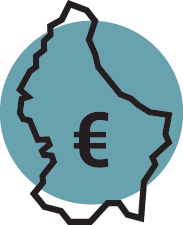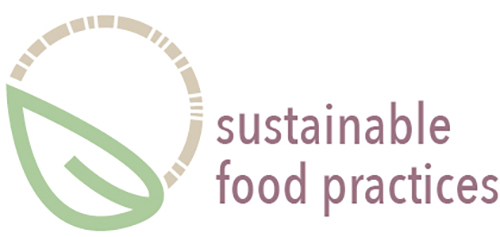Themes and Indicator Definitions

Environment
Efforts are made, during the various phases of production, processing and consumption of food, to minimise negative impacts on nature and even create positive side effects. This makes our food system more ecologically sustainable.
Indicators:

Animal welfare: The physical and psychological well-being of animals, including the conditions in which animals are kept to maintain their natural behaviour, feeding, handling, transport and slaughter and the avoidance of unnecessary suffering. The animals must be able cope in a species-appropriate way within the conditions in which they live, and be healthy, comfortable, safe, well nourished, without fear or suffering.

Biodiversity: Biodiversity is the variability and diversity of ecosystems, of species in these ecosystems and of the genome within these species. In agriculture it includes the variety and variability of animals, plants and micro-organisms which are necessary to sustain the functions of the agro-ecosystem, its structure and processes towards, and in support of, ensuring food security. In aquatic ecosystems it includes the variability of living organisms relying on it whether in the water or living near it. It also includes the conservation and improvement of such healthy ecosystems.
![]()
Health of flora and fauna: Health of fauna and flora is about the controls of pests and disease to maximise production and prevent crop loss through the use of biological, cultural, chemical, and integrated control. In organic farming there is a wholefarm approach using natural systems to prevent and reduce pests and creating robust sustainable and biodiverse systems. The health of fauna and flora is also about managing ecological relationships without trying to control weeds, pests and disease, and use methods to enhance beneficial biota, maximise and preserve beneficial insects, recycle nutrients, minimise disturbance to soil etc.

Soil fertility: Targets and processes preventing land degradation and rehabilitating degraded land. The use of soil improvement practices to improve the physical, chemical and biological properties of the soil.

Economic well-being
All workers in the food sector have present and future financial security. Society prospers through their food production activities, building both financial and social gains. More local, circular and solidarity-based food production is fostered.
Indicators:

Producer sovereignty: Farmers and organisations are in control of the economic technical decisions that they take. Diversification is encouraged. In order to avoid dependence on a single crop/product or external subsidies, the use of alternative markets is favoured. This also includes the formation of cooperatives that are voluntary and democratic, balancing the pursuit of profit and meeting the needs and interests of their members and their communities.

Food miles: The distance between the place where food is grown/made and the place where it is eaten. It represents the food’s carbon footprint in terms of transportation.

Local economy: A circular and solidarity economy reconnecting producers and their consumers in a local market and supporting local economic development. Local needs, resources and capacities are part of planning agro-ecological solutions for more equitable and sustainable markets. Shorter food circuits can increase the incomes of food producers and maintain a fair price for consumers.

Social well-being
Every human being is able to fulfill their basic human needs, and has the right and freedom to pursue their aspirations for a better life, without compromising the ability of others and of future generations to do the same.
Indicators:
 Decent livelihoods: Decent Livelihoods refer to the assets, capabilities and activities that meet the needs to maintain a safe, decent standard of living and increase livelihood security for people and the community in which an organisation operates. It also includes the ability to save for future needs and goals. There is a right to quality of life, education and training for skills and knowledge (capacity development), fair access to land and means of production.
Decent livelihoods: Decent Livelihoods refer to the assets, capabilities and activities that meet the needs to maintain a safe, decent standard of living and increase livelihood security for people and the community in which an organisation operates. It also includes the ability to save for future needs and goals. There is a right to quality of life, education and training for skills and knowledge (capacity development), fair access to land and means of production.
 Equity: The fairness and inclusiveness with which resources are distributed and in opportunities provided. All people and their quality of life are recognised as of central importance. All population groups are given opportunities in an equitable way, are not discriminated against and have access to equal resources, education and career opportunities.
Equity: The fairness and inclusiveness with which resources are distributed and in opportunities provided. All people and their quality of life are recognised as of central importance. All population groups are given opportunities in an equitable way, are not discriminated against and have access to equal resources, education and career opportunities.

Labour rights: Labour Rights include legal rights and human rights related to labour relations between workers and their employers, underpinned by labour and employment law. Organisations do not accept forced, bonded or involuntary labour, nor child labour that may harm the physical or mental health or hinder the education of minors

Fair trade practices: They include both legal and human rights that allow anyone in production to have access to markets where fair prices are negotiated in a stable way and based on true costs. Agreements are long-term and contracts include processes for settling disputes. It also includes the freedom and rights of association, sharing requirements for the utilisation of traditional and cultural knowledge (indigenous knowledge), collective bargaining (for salaries, working condition etc.), fair prices, fair right to negotiations (with equitable outcome) and conflict resolution.

Good governance
The way companies conduct business, manage their resources and assets, and shape decision-making aims at increasing sustainability. Product information is transparent and accessible. Companies use participatory approaches and can be held accountable for their claims.
Indicators:

Transparency: Transparency means information sharing, trust and open communication, respect and consideration amongst stakeholders. Procedures, policies, decisions and decision-making processes are shared and publicly accessible to all stakeholders affected by the organisation’s activities. Information about brands or products are provided via publicly accessible tools such as websites or labelling specifications (cahiers des charges).

Participation: In participation, all stakeholders affected by the enterprise’s activities are identified (including those not easily able to claim their rights), empowered and encouraged to be involved in development and partnerships (stakeholder engagement), kept informed and engaged in decision-making (effective participation). The aim is sharing of information and expertise, knowledge transfer in multiple directions, valorising local knowledge, strengthening communities and encouraging local partnerships, while teaching principles of agro-ecology and sustainability. Through participation, all stakeholders substantially affected by the enterprise’s activities are identified, empowered and invited to share decision making on activities impacting their lives and having major environmental impacts. The identification of stakeholders includes examining how asymmetries of power can prevent the engagement of vulnerable stakeholders and a commitment to identifying barriers to engagement and overcoming them.
 Sustainable management: Sustainability management includes continuous improvement in the areas of environmental integrity, economic resilience, social well-being and good governance, with the ultimate goal of operations being fully in line with sustainable development of a society (civic responsibility). An organisation should have a sustainability plan with a holistic view of its activities’ sustainability. This commitment should be clear to the public, personnel, and other stakeholders through their mission statement or other declaration and be binding for management and employees. Accountability includes ensuring that such governance performance information is complete, correct and accessible and is disclosed (due diligence). Triple bottom line reporting demands that an enterprise’s performance be assessed in economic, social and environmental terms. This should enable enterprises to make better decisions because they have a better grasp of the full impact of these decisions.
Sustainable management: Sustainability management includes continuous improvement in the areas of environmental integrity, economic resilience, social well-being and good governance, with the ultimate goal of operations being fully in line with sustainable development of a society (civic responsibility). An organisation should have a sustainability plan with a holistic view of its activities’ sustainability. This commitment should be clear to the public, personnel, and other stakeholders through their mission statement or other declaration and be binding for management and employees. Accountability includes ensuring that such governance performance information is complete, correct and accessible and is disclosed (due diligence). Triple bottom line reporting demands that an enterprise’s performance be assessed in economic, social and environmental terms. This should enable enterprises to make better decisions because they have a better grasp of the full impact of these decisions.


